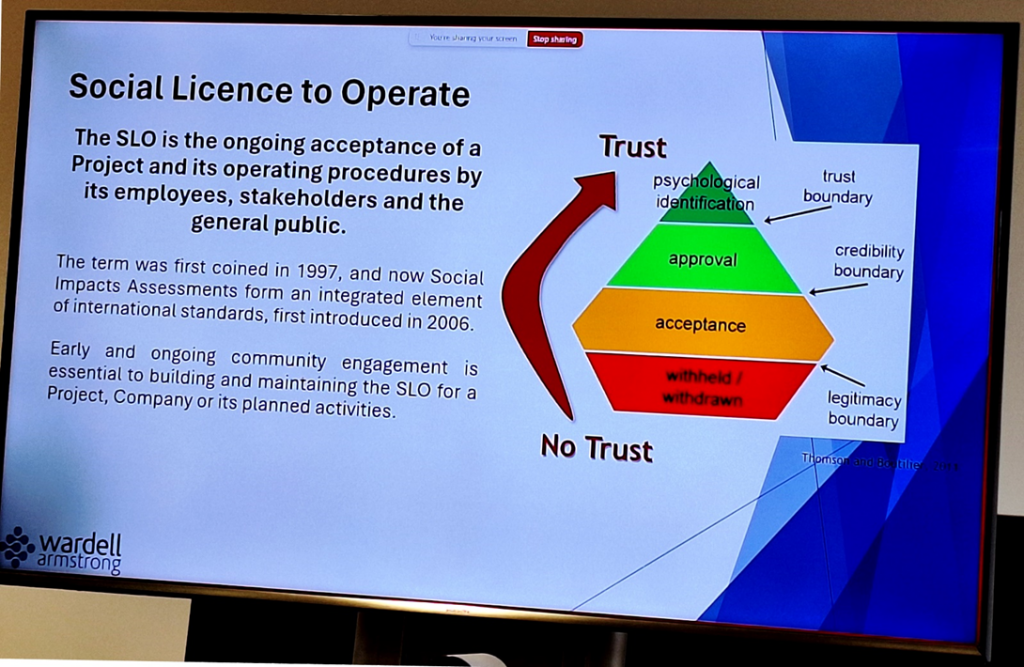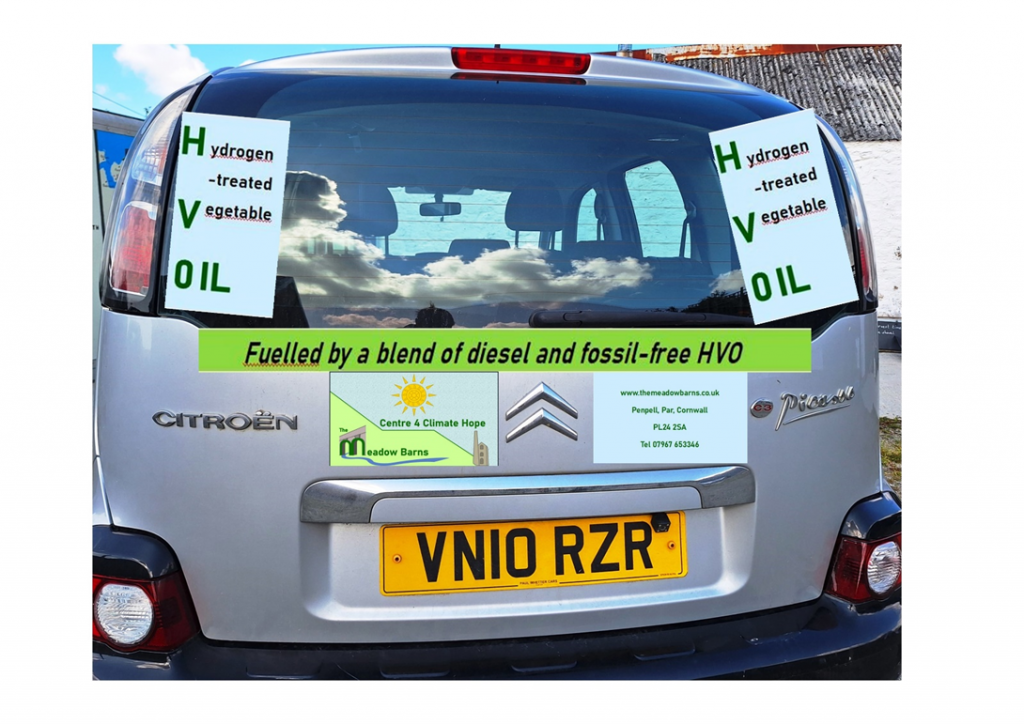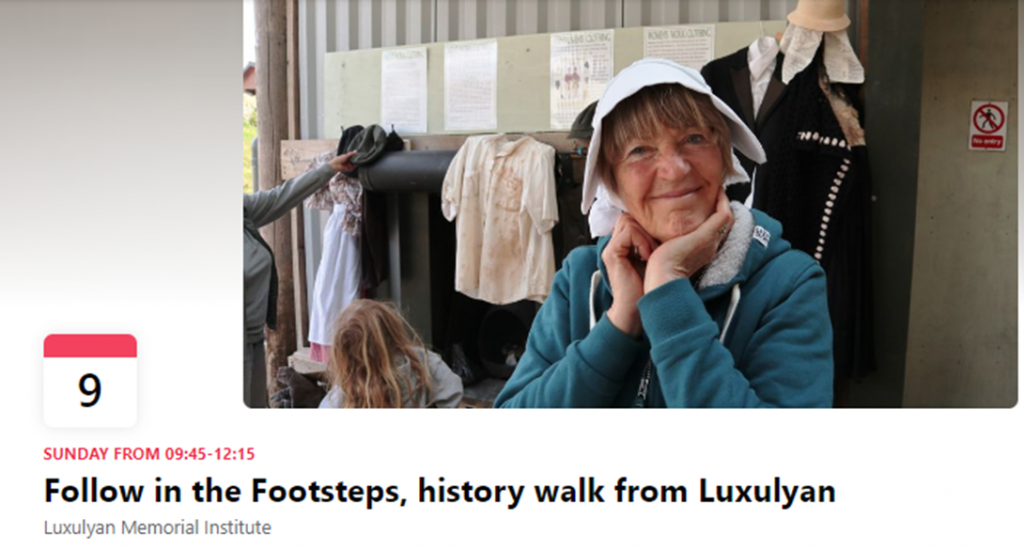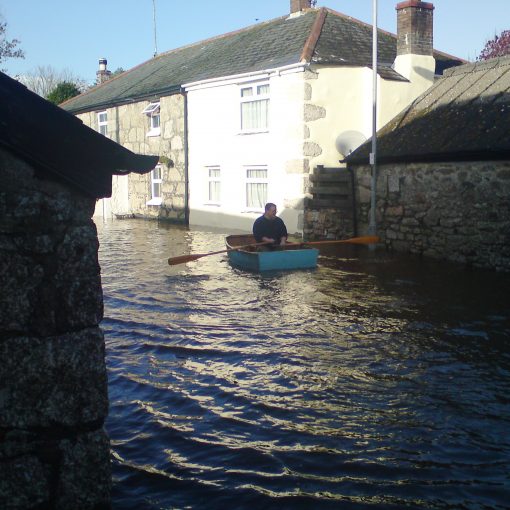June 7th
We start with open garden day at Bridge Mill and other Watermill links. Then I travel west for a fascinating breakfast meeting by the Red River & conclude with success at last, getting HVO into my fuel tank.


Sunday 2nd June was a perfect day, weather-wise, to enjoy an Open Garden Event at The Bridge Mill. It was about an hour’s drive to the village of Bridgerule, a tiny hamlet sitting beside the River Tamar a few miles into Devon. Just over the bridge, in on the left we found a truly magical hideaway, leaving the hustle and bustle of modern life far behind. The wildflower meadows, organic vegetable garden, huge mill ponds and of course the mill itself, with tea shop, all provided chances for nature and humans alike to relax and bask in the sun.
We met the family, Alan & Rosie and daughter Katie, who told us the fascinating story of how they steadily worked to restore the mill, using a slightly different model than most. By this I mean, there is no ‘Abstraction’ of water into a leat from a flowing waterway. This means no hassle from the Environment Agency, no need for fish screens and no huge bill for a licence. So what do they do instead? Well they have 3 mill ponds and, as the sign says, these are filled by run off. When they decide to run the wheel, for a while, one of them draws the short straw e.g. they probably have to suck the mucky water through an initial tube, to get the siphon action started.
Siphon – any of a wide variety of devices that involve the flow of liquids through tubes, using gravity between 2 containers. This didn’t quite seem adequate as an explanation, so I very much recommend visiting this webpage, https://www.wonderopolis.org/wonder/how-does-a-siphon-work. You need to boost the volume and take your time, but the 2 small children’s presentation is amusing and rather wonderful. In fact, you really, really should watch to the end, which is HILARIOUS! They keep using the word ‘Hypothesise’ and answer their own question, ‘Can gravity change the direction of momentum within a siphon?’ I am sending an appreciative email to them, to build a happy connection. 😊
Back to the Bridge Mill
In a little lull between their many visitors, Alan was kind enough to go deeper into the mill story. We talked finance – his own, mostly hand-done restoration has cost them at least £25,000 over 27 years, which debt they have just recently paid off and moved into profit. Congratulations! Their method has been to offer up to 25 free visits for schools per year under the DEFRA Higher Level Environmental Stewardship Educational Access scheme, which is now coming to the end of its 10 year allocation.



I was shocked to learn that each school visit has paid them a measly £100, which could only be considered adequate cover for about 1 to 1.5 hours, when the actual duration can be up to 4 hours. We shared our struggles, in this regard, trying to make ends meet with schools so limited in their own budgets and time. As part of this I mentioned my growing vision for use of Shire horses in the woods here and the potential to engage clients with mental health problems in managing the work and producing wood products. Leading from this, it was very interesting and welcome when they put to me the idea of offering this under the banner of ‘Care Farm’ or ‘Green Care’ activities at Meadow Barns. Unlike the Environmental Ed Access scheme I believe I could apply to deliver this, because I would not need a farm holding number or DEFRA .. So what is this about and would there be funding?
Care Farms and Green Care
https://greencarecoalition.org.uk/what-is-green-care/ or see Social Farms and Gardens https://www.farmgarden.org.uk/knowledge-base/article/what-care-farming
Care farming in the UK has grown from less than a hundred care farms to a network of over 400. The farms vary in size, context and delivery approach; together they form a key element of the green care sector.
Green Care programmes involve the active and regular engagement of the individual with meaningful nature-based activities delivered by trained practitioners to create a sense of achievement, personal responsibility and self-confidence and offer opportunities to learn new skills; by taking place within a social setting they also promote feelings of inclusion and belonging.
There are a wide range of nature-based activities that can be used in these programmes, including horticulture and food growing, farming and animal assisted services, and environmental and wildlife conservation.
The main Green Care website is short on details that I will need to know. It talks repeatedly of the relationship between client and ‘practitioner’ but nowhere can I find out how to be recognised as a professional in this field.
Aiming to create a system that can enable participants to make and sell beautiful articles made of beech wood does not fit the following criteria: –
unlike some other occupational therapy activities, the ‘result’ is important because it is alive: if the plant or animal doesn’t thrive it will not produce the same outcomes for the patient’s health and wellbeing.
But I consider there could be as much benefit from a creative and selling task, as there would be by interacting with plants or animals. Hmm, I predict much more research and discussion in the next months, to see how this option could play out.
Dragonflies and Damselflies
Hopefully you noticed the bright blue dragonfly above the pond; Bridge Mill is a key Devon Dragonfly site.


This is a topic I know little or nothing about, so off I go to the British Dragonfly Society web page:-
The British Dragonfly Society (BDS) was founded in 1983 by a small group of dragonfly enthusiasts and scientists. The Society has grown substantially since that time and the current BDS membership of about 1,800 is spread the length and breadth of the country, as well as into Europe and beyond.
We have three main aims:
· Carry out and support research on dragonflies
· Conserve dragonflies
· Engage the public with dragonflies and their wetland habitats.
True Dragon flies Body: Large and robust.
Wings: Hind wings are usually shorter and broader than the forewings.
Eyes: Very large and usually touch at the top of the head.
Damselflies Body: Delicate and small.
Wings: Forewings and hind wings are the same shape.
Eyes: Separated on the head.
Behaviour: Weak flight. Usually rests with wings held against the body.
What about colours? The colour of adult dragonflies changes with age. Tenerals (newly emerged adults) can appear very pale and may not have their mature colouration yet. You may have to look closely for any emerging markings or patterns to help identify it. Similarly very mature adults can appear much darker.
There was not much more on their website, so I was very pleased to come across a TV programme, made a couple of years ago but broadcast again on BBC4 this week, called ‘Cornwall’s Red River’ – with a section on Dragonflies at 13 Minutes, introducing also the passionate photographer, Steve Jones. Steve has recorded 17 species, some of which are nationally rare. Here we see the abandoned mining pits becoming valuable as habitat, not as a result of removing the mining residues but because of keeping them. Copper, arsenic and other heavy metals keep the vegetation at bay, enabling the flies to flourish. Steve concludes that ‘poison keeps this site pristine, where so many other sites along the valley have been lost.’


A further surprise in the programme is to learn that the Red River contains a genetically-unique population of brown trout that has evolved to survive its toxic environment. These fish are as much artefacts of the industrial revolution as Cornish engine-houses!
https://www.bbc.co.uk/iplayer/episode/m0014zrj/cornwalls-red-river
Wheal Jane site today
At the very end of the TV programme the headline flashes up, briefly, to say ‘since this programme was made a major clean-up project has been undertaken, to remove contaminants from the Red River.’ Now I have written about this before, when Countryfile did a feature called ‘Underground Britain – https://themeadowbarns.co.uk/gf-blog-23-week-3/
By one of those strange coincidences, I drove to the site on Tuesday for a breakfast meeting of the Geo-Resources project. We were hosted by Wardell Armstrong, a highly impressive organisation at the cutting edge of mining developments for the future and indeed – though I only discovered this on a brief drive around afterwards – they operate the Wheal Jane treatment plant.



Wardell Armstrong’s presentation began gently, with a minutes silence to commemorate a very important pioneer, behind the Wheal Jane ventures, Bernard Ballard, who has recently died. You can find out much more about him and the entire site here https://www.wheal-jane.co.uk/about-the-site/history/ . The photos and history of the site tell me in actual fact the blue box is a top, exterior cover of a huge hopper, that carried ore.
The main ‘meat’ of the session was demanding, to say the least. I will do my best to simplify and summarise: –
a) There are not many genuinely new mining ventures (green sites), but lots of potential to re-open and explore previous ones (brown sites).
b) To commence any new mine venture these days involves a totally different set of priorities than used to operate in the last century. Happily, the main difference is with ref to E.S.G. – Environmental, Social and Governance concerns. Accountability is key, in all areas of impact on people, communities and landscape.
c) The accountability does not end when active mining ceases, as there is a requirement to plan and deliver restoration and remediation for a considerable period of legacy time.
d) Yes, Cornwall can supply such metals as lithium, cobalt and manganese, which are called ‘Critical’ for obvious reasons. We need to increase their production massively to keep apace with demand from EVs and technology for personal devices etc.
e) The process is very demanding financially but often very risky too. Of major importance are modern methods of searching and recording what ores are in the ground. These use ‘Ordinary Kriging’ and ‘Gaussian Simulation!’ So far as I can discover Kriging is a method of comparing old and new data, sourced within a known piece of ground, in order to predict future yield. Gaussian Simulation is another, closely related way to interpret the data.
f) All in all, with the challenges and financial risks, it is quite a miracle that an old tin mine like South Crofty is predicted to re-open soon.

At coffee, I met up with Ben Clitherow, an expert who is engaged in planning water management in readiness for re-opening Crofty. The process of ‘De-Watering’ is going to take quite a time, given that it involves pumping out 300 miles of tunnels!! They are permitted to extract a maximum of 25 million litres per day, which sounds enormous. But no, it is probably going to take until the end of 2025 to complete this task. One of the challenges is having to re-build a pumping station in the main shaft, halfway down in depth, at 195 fathoms!
From a chemical point of view, the water has to be pumped full of air and peroxide, which will help remove large quantities of arsenic and iron. There follows many more stages, using hydrated lime to adjust PH and ‘clarifier’ machinery to take away remaining toxic sludge. All of this is required to meet Environment Agency licensing requirements, and the latter stages of work will happen at Wheal Jane.
A final plan is to crush the worthless rubble left after mining, mixing with cement to create lumps of rock that are replaced into empty voids of tunnels far below ground, as this can reduce the space for water and Radon gas. With not a little pride, Ben told me ‘we may even manage the world 1st, of all the ‘tailings’ being able to be encased back below ground.’
Tuesday’s Long Lunch Time!
The day had begun very early, in order to be at Wheal Jane for 9 a.m. So I was happy that I had brought some food and was able to take away some as well, to tide me over lunchtime. I was absolutely right to be prepared, because it took 1.5 hours of waiting in the Mitchell and Webber foyer, until my car insurance company (NFU) and the underwriters were finally willing to permit me to receive 15 litres of HVO in with my diesel! Reflecting back, it is exactly one year since I first met John Weedon at the Royal Cornwall Show and saw his giant green signs for HVO. Taking my time, doing very thorough research, engaging experts across the board, all those have been the only way to reach the moment and not feel worried as the fuel was put into my tank. The last little clincher was an email from John’s son, Tristan, saying
To whom it may concern
Along with many of our customers, we operate numerous different vehicles fuelled on HVO.
Some vehicles operate on an 100% blend, and some operate on different blends with standard diesel.
HVO is a drop-in replacement for diesel and is approved by nearly all vehicle manufacturers.
Due to its sustainable nature, it is an effective way to reduce overall CO2 emissions.

Now we come to the next stage, talking to all those who may choose to put up their business info on this car. I know it will look a lot better than this, once Louise and other designers get on board!
A few friends have asked, can you tell a difference? I teased them, ‘coming up the hill through Grampound, I thought I could smell fish and chips!’ But that must have been an over-active imagination, there is no hint of aroma or change in the car’s performance. All of this will feed into a final report, to be sent to the next minister for energy and climate, in a month or so.
SW Water and Desalination updates
Next steps
Whilst a full Environmental Impact Assessment is not required, South West Water will need to obtain the relevant planning permissions and regulatory consents – this includes the planning application for the Phase one plant and treatment wetland.
We are still awaiting the screening opinion of the Marine Management Organisation (MMO) which we will also need in order to progress our applications.
In addition, regardless that an EIA is not required for this application, protecting the environment is of upmost importance to us. Our survey work has both continued and expanded, and we are continuing to work closely with the experts to understand the environment, its unique conditions and any potential impacts this project could have. We will share information about our assessments and how we will minimise impacts at our consultation events later this year, so that residents can take an informed opinion on our proposals.
Screening Request, Environmental Impact Assessment (EIA) and community involvement in the planning process.
We want to ensure that all of our customers and residents have the opportunity see our proposals before any planning applications are submitted.
Local residents and customers have recently been in touch to ask why they were not consulted on the recently submitted screening opinion request.
- Screening is a procedure used to determine whether a proposed project may have significant effects on the environment and if an Environmental Impact Assessment is required. The screening opinion request is submitted to the Council in order to determine whether the proposed development requires an EIA.
- It is not usual practice to consult with residents on a screening opinion request. This does not mean that there will not be an opportunity to be consulted on the application for Phase One.
- As part of the planning process, we are committed to ensuring that we consult the local community on our proposals. Alongside our application, we will be submitting a Statement of Community Involvement (SCI) which will detail how we have engaged with the local community, and where possible, how we have taken on board feedback that we have received.
- Therefore, please rest assured that the planning process for this project is ongoing – and that we are planning consultation events to introduce more details on the proposals and seek your feedback prior to the submission of a planning application.
Pipeline route to Restormel and Permitted Development
Because an EIA is not required, the main pipeline that will take the desalinated water to Restormel Treatment works would be deemed Permitted Development under regulatory rules.
However, there are still a number of requirements and considerations that we are committed to complying to. This includes processes and procedures for construction to ensure impacts on communities, local landscape and the environment are minimised.
We still need to apply for various environmental licenses and permissions and in liaison with our regulators, produce a Construction Environmental Management Plan (CEMP), Construction Traffic Management Plan (CTMP) and a Landscape and Ecological Management Plan (LEMP), which would include details about how we would mitigate and manage impacts on the environment, local communities and the local landscape.
Sent on behalf of the Par desalination project team. This leads into
8th June 4.30-5.15 Say No to Desal on World Ocean Day!
Join us for a paddle/swim out with a Show of Strength on the beach to show how many people oppose SWW’s plans for desalination in Cornwall!
4.30pm – gather on Par Beach – look for the Blue Gazebo
4.50pm – beach parade with placards/banners and The Horners Street Band
4.55pm – boats assemble in the bay, paddlers launch, swimmers get ready!
5pm – swimmers go, human chain along shoreline, boat horns, drums, MAKE SOME NOISE!!
Main event in Par but join from Polkerris, Spit and Carlyon with boats from Fowey and Mevagissey.
Also on Saturday 8th June
St. Austell, at the Quaker Meeting House from 15.00 hours – ‘Why eat Plants?’
Sunday 9th June

https://www.facebook.com/events/809767061116824
Friday 14th June
| You’re invited to the nature and climate hustings near you! Cornwall South East constituency: Friday 14th June |
Our next nature and climate husting is right on your doorstep: we’re off to the Cornwall South East constituency on Friday 14th June – you’ll have the chance to hear from parliamentary candidates and ask them questions. We’d love to have as many you as possible at Lostwithiel Community Centre to show the candidates how much people in your area care about environmental issues.
Confirmed to be attending this hustings are:
Anna Gelderd (Labour candidate)
Martin Corney (Green candidate)
Colin Martin (Lib Dem candidate)
Date: Friday 14th June
Time: Doors from 6.15pm | Event 6.30pm – 8.30pm
Venue: Lostwithiel Community Centre, Pleyber Christ Way Lostwithiel, PL22 0HA




